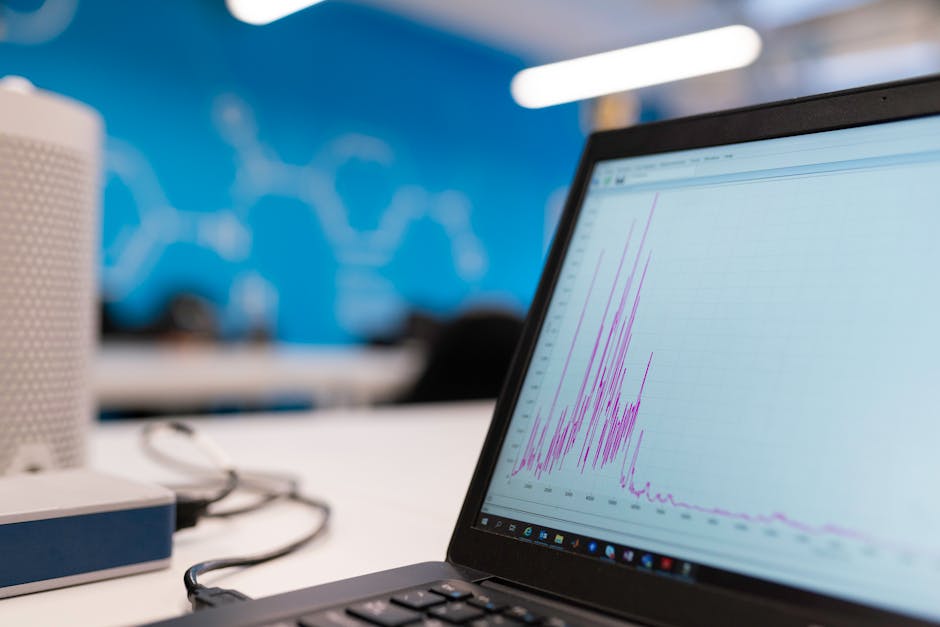Revolutionizing Workplace Efficiency: The Power of Workspace Management Software
“In today's dynamic work environment, businesses are seeking ways to optimize their office spaces and support hybrid work models. Workspace management software emerges as a game-changer, offering a centralized solution to manage desks, meeting rooms, wayfinding, and space utilization analytics. This article explores the benefits of implementing workspace management software and how it can revolutionize workplace efficiency. ”

In the era of hybrid work, businesses are facing new challenges in managing their office spaces efficiently. With employees splitting their time between remote and in-office work, optimizing workspace utilization has become a top priority. This is where workspace management software comes into play, offering a comprehensive solution to streamline office operations and enhance the employee experience.

What is Workspace Management Software?
Workspace management software is a centralized tool designed to help businesses optimize the use of their office space. It enables companies to manage desks, meeting rooms, wayfinding, and space utilization analytics, all within a single platform. By leveraging this technology, businesses can boost productivity, improve space efficiency, and create a more positive work environment for their employees.
Key Features of Workspace Management Software
-
Desk Booking: With a hybrid work model, not every employee needs a permanent desk. Workspace management software allows employees to easily view, book, and release desks as needed, ensuring optimal utilization of available workspaces.
-
Conference Room Booking: Meeting rooms are essential for collaboration and presentations. Workspace management software enables employees to book various types of meeting spaces, from traditional conference rooms to phone booths and cozy lounges, based on their specific requirements.
-
Maps and Wayfinding: Navigating a large office can be challenging, especially for new employees or visitors. Workspace management software often includes wayfinding functionality, providing interactive maps and directions to help users find their way around the office effortlessly.
-
Analytics: Data-driven decision-making is crucial for optimizing office spaces. Workspace management software offers comprehensive analytics and reporting features, allowing businesses to gain insights into space utilization, attendance trends, and popular meeting room bookings. This information empowers companies to make informed decisions about their office layout and resource allocation.

Benefits of Implementing Workspace Management Software
-
Optimized Space Usage and Cost Savings: By monitoring space and resource usage through a centralized dashboard, businesses can identify underutilized areas and make data-backed decisions to optimize their office layout. This can lead to significant cost savings on real estate expenses.
-
Enhanced Employee Experience and Productivity: When employees can easily book desks, reserve meeting rooms, and navigate the office, they experience less friction and frustration. According to a recent workplace trends report, 34% of employees cited slow technology as a major deal-breaker for returning to the office. By providing efficient and user-friendly tools, workspace management software contributes to a more positive employee experience and increased productivity.
-
Improved Safety and Compliance: In the post-pandemic world, ensuring a safe and compliant workplace is paramount. Workspace management software allows businesses to monitor occupancy levels, track employee locations, and maintain social distancing protocols. This helps create a safer work environment for everyone.
-
Seamless Integration with Existing Tools: A key benefit of workspace management software is its ability to integrate with other workplace tools and platforms. For example, desk booking can be synced with Slack, while conference room reservations can be integrated with Google Calendar. This streamlined approach reduces the number of tools employees need to navigate and simplifies IT management.

Choosing the Right Workspace Management Software
When selecting a workspace management software, it's essential to consider your organization's specific needs and requirements. Look for a solution that offers a comprehensive set of features, including desk booking, meeting room management, wayfinding, and analytics. Additionally, ensure that the software integrates seamlessly with your existing tech stack and provides a user-friendly interface for employees.
It's also crucial to choose a vendor that offers reliable support and has a proven track record of successful implementations. Consider reaching out to other businesses in your industry to gather insights and recommendations.
Conclusion
In today's dynamic work landscape, workspace management software has become an indispensable tool for businesses looking to optimize their office spaces and support hybrid work models. By centralizing the management of desks, meeting rooms, wayfinding, and space utilization analytics, workspace management software empowers companies to make data-driven decisions, enhance the employee experience, and drive productivity.
As businesses continue to navigate the challenges of the modern workplace, investing in a robust workspace management solution can be a game-changer. By leveraging the power of technology, organizations can create a more efficient, collaborative, and engaging work environment that meets the evolving needs of their employees.
